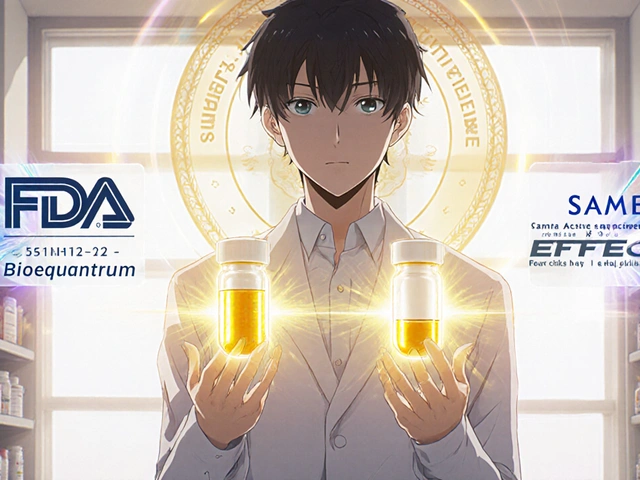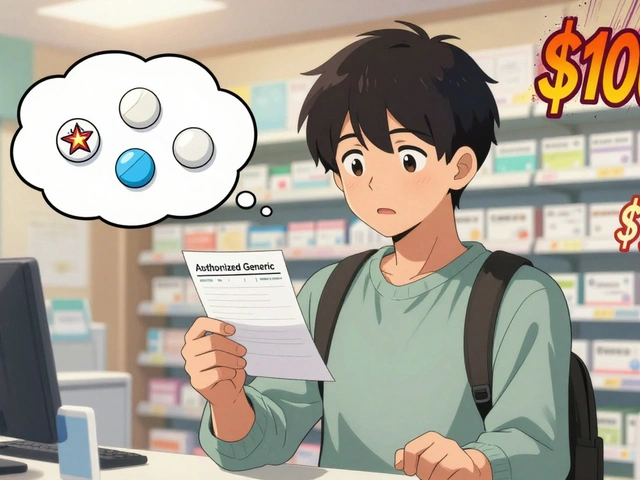Key takeaways
- For most people, the generic costs a fraction of brand-name Lodine/Lodine XL and works the same for pain relief.
- Formulation matters: immediate‑release (IR) is cheapest; extended‑release (ER) costs more but can be once daily.
- Typical U.S. cash prices: IR generic often $8-$35 for a 30‑day supply; ER generic $20-$90; brand can run $300-$900+ if available.
- Insurance usually favors the generic; brand often lands on higher tiers or needs prior authorization.
- Biggest savings levers: compare pharmacies, use discount coupons (cash), ask for a 90‑day supply, and avoid ER unless you truly need it.
You clicked because you want a straight answer to one question: is the brand worth the money, or should you grab the generic and move on? Short answer: most folks get the same relief from generic etodolac and pay a lot less. The wrinkle is formulation, insurance rules, and where you fill the script. I’ll show you real price ranges, how to sidestep hidden fees, and when brand actually makes sense.
What really drives the price: the simple rules that decide what you’ll pay
Etodolac is an NSAID for pain and inflammation. The brand names you’ll hear are Lodine (immediate‑release) and Lodine XL (extended‑release). Pharmacies stock the generic far more often. That alone swings the math.
Here’s how to predict your cost before you hit the counter:
- Formulation: Immediate‑release (IR) tablets are cheapest. Extended‑release (ER/XL) costs more because it’s harder to make and often in higher tiers. If you can take IR twice daily, you usually save.
- Strength: Common IR strengths are 200 mg, 300 mg, and 400 mg. ER strengths are often 400-600 mg. Per‑tablet unit price can change with strength, so do the math (price ÷ tablets).
- Quantity: A 90‑day fill can lower your per‑month cost, especially with insurance flat copays or mail‑order pricing.
- Insurance tier: Generic IR is often Tier 1 ($0-$10). Generic ER is often Tier 2 ($10-$50). Brand Lodine/Lodine XL can be Tier 3-4 (higher copay or a percentage of cost). Plans vary widely.
- Where you buy: Chain vs independent pharmacies can differ by 2-5x on cash price. Coupon programs also vary by location.
- Availability: Some areas rarely stock the brand. If it must be ordered, that delay can add fees or push you to a different NDC with a different price.
One more thing: brand vs generic effectiveness. By FDA rules, generics have to match the brand within the bioequivalence window (generally 80-125% for exposure measures like AUC and Cmax). That’s the long way of saying the generic is designed to work the same. The FDA Orange Book lists approved, bioequivalent products; if you want the comfort of paperwork, that’s where pharmacists check it.
Two ground rules to avoid paying more than you need:
- Don’t split extended‑release tablets. That ruins the release profile and can be unsafe. If you need to split, talk to your prescriber about an IR strength that’s OK to split.
- Don’t combine insurance with a retail coupon. You use one or the other at the register. Compare both; pick the cheaper.
Quick unit‑price trick: take the total price and divide by tablet count to get price per pill, then divide by milligrams if you want price per mg. This helps when comparing 200 mg IR twice daily vs 400 mg IR once daily.

Brand vs generic etodolac prices: realistic ranges, trade‑offs, and how plans treat them
These ranges are pulled from common U.S. cash pricing seen at major chains and discount tools, plus CMS NADAC trends. Your numbers can be higher or lower by zip code, wholesaler, and timing. Treat them as a planning map, not a promise.
| Formulation | Common strengths | Typical 30‑day cash price (Generic) | Typical 30‑day cash price (Brand) | Notes |
|---|---|---|---|---|
| Immediate‑release (IR) tablets | 200 mg, 300 mg, 400 mg | $8-$35 (e.g., 60 × 200-400 mg) | $250-$600 (Lodine, limited stock) | Cheapest route; taken 2-3×/day. Wide pharmacy variation. |
| Extended‑release (ER/XL) tablets | 400 mg, 500 mg, 600 mg | $20-$90 (30 tablets) | $400-$950 (Lodine XL) | Once daily; more expensive and tighter insurance controls. |
To put that into everyday terms: if you’re paying cash and don’t need once‑daily dosing, IR generic is often about the price of lunch. ER generic costs more but can still be reasonable. Brand can quadruple the bill, sometimes more, and it may not even be on the shelf.
Insurance reshuffles this, but the pattern holds. Most plans nudge you to the generic by design. A quick snapshot of how many plans treat it:
| Scenario | IR Generic | ER Generic | Brand (Lodine/Lodine XL) |
|---|---|---|---|
| Commercial plan, standard tiers | Tier 1: $0-$10 | Tier 2: $10-$50 | Tier 3-4: $45-$100+ or 25-40% coinsurance |
| High‑deductible plan (before deductible) | $10-$25 cash or plan-negotiated | $20-$60 cash or plan-negotiated | Often full retail until deductible is met |
| Medicare Part D | Often preferred generic copay | Varies; some plans favor IR | Non‑preferred with higher cost, may need PA |
Note: Copays and coinsurance vary by plan and pharmacy partner. Check your plan’s formulary app to confirm the tier for your exact NDC (the product identifier pharmacies use).
“Best for” quick guide
- Generic IR - Best for tight budgets, short‑term use, or if twice‑daily dosing is fine. Usually the lowest out‑of‑pocket cost.
- Generic ER - Best if you need once‑daily dosing for adherence. Costs more than IR but still far cheaper than brand.
- Brand Lodine/Lodine XL - Only makes sense if you have a rare excipient issue, a brand‑only prior authorization approval, or a coupon that beats generic pricing (uncommon).
What’s the actual difference in the bottle? The active drug is the same. What can change are the inactive ingredients, pill size, and release mechanism (IR vs ER). If you’re sensitive to a specific dye or filler, ask your pharmacist to pull the exact manufacturer’s ingredient sheet. They can usually order a different generic if needed.
Quality and effectiveness: FDA requires generics to meet the same quality and performance standards as the brand. Pharmacists rely on the FDA’s Orange Book for therapeutic equivalence. For NSAIDs like etodolac, generics have a long safety and performance track record.
Let’s run a couple of simple price math examples so you can spot a good deal:
- IR example: Pharmacy A: $18 for 60 × 400 mg (price per tablet: $0.30). Pharmacy B: $12 for 60 × 300 mg (price per tablet: $0.20). If your dose is 300 mg twice daily, Pharmacy B is cheaper even though the bottle price looks lower at A. Check the math per tablet and per mg.
- ER example: Pharmacy C: $78 for 30 × 600 mg. Pharmacy D: $32 for 30 × 500 mg. If your prescriber can target 500 mg daily, D is a clear win. If you truly need 600 mg, ask your prescriber about IR options or whether 500 mg ER plus a small IR dose is appropriate. Don’t change doses without asking.
One last note on availability: some wholesalers barely stock the brand. If you insist on brand, expect a 1-3 day order and a bigger price swing. That’s not a bait‑and‑switch; it’s supply chain reality.

Save more with these moves: step‑by‑step shopping, common pitfalls, and smart alternatives
You don’t need to be a pharmacy insider to cut your bill. Follow this quick playbook and you’ll usually land the best price without chasing your tail.
Step‑by‑step: how to lock in a low etodolac price
- Ask your prescriber for flexibility: If it’s written for brand, request “generic OK.” If it’s ER, ask if IR is acceptable. If you need once‑daily, confirm ER is necessary.
- Check both routes: insurance vs cash coupon: Use your plan app or member portal to see copay tiers, then price the same strength/quantity on a major coupon app. Pick the cheaper at the register (you can’t stack them).
- Call 3 pharmacies: Ask for the out‑the‑door price for your exact dose, strength, and quantity. Give them the NDC if you have it from your prescriber or coupon. Prices can swing a lot.
- Ask for 90 days: If this is chronic therapy and your prescriber agrees, a 90‑day fill can cut per‑month cost and save trips.
- Mail order if your plan favors it: Many plans drop copays for 90‑day mail order. Compare before switching.
- Don’t split ER: If cost is the only issue, changing formulation is safer than splitting an ER tablet.
Pro tips that actually help
- Unit price check: Settle any price confusion by dividing total price by tablet count (and by mg if strengths differ).
- DAW watch: If the script says “Dispense As Written,” pharmacies must give brand. If you don’t need brand, ask for a new script without DAW.
- Supply sync: Align refill dates for all your meds with a pharmacy “med sync” service to reduce extra trips and surprise mid‑month fills at higher prices.
- HSA/FSA: You can use these for copays or cash coupon purchases. Keep the receipt.
- Coupons vs plans: If a coupon beats your copay, you can pay cash and skip insurance for that fill. Just know it won’t count toward your deductible.
Common pitfalls to avoid
- Chasing the brand hoping it’s “stronger.” The active drug is the same; you’re buying packaging and a trademark.
- Assuming “one pharmacy fits all.” Prices vary. Sometimes the independent down the street beats the big box store.
- Letting a coupon auto‑default to a different strength or quantity than your prescription. Make sure the coupon matches your dose, or the price will change at the counter.
- Ignoring side effects to save a few dollars. If IR upsets your stomach but ER doesn’t, bring that up. Comfort matters.
If you’re uninsured: Start with IR generic, compare three pharmacies with coupons, and ask for a 90‑day script if you’ll be on it for a while. Expect $8-$35 for IR or $20-$90 for ER per month with the right pharmacy and coupon.
If you have commercial insurance: Check your formulary. If ER is non‑preferred, ask your prescriber to justify need or switch to IR. If a specialty pharmacy offers a lower rate via your plan, use it.
If you’re on Medicare Part D: Formularies vary by plan. IR generics are usually cheapest. ER may cost more or need prior authorization. Your plan’s star‑rated preferred pharmacies can lower your copay-worth checking.
If you’re a caregiver: Keep a simple one‑page med list with dose, strength, and preferred pharmacy. It speeds up calls and prevents refill errors that can cost you extra.
Credible alternatives to ask about (if cost or fit is off)
- Naproxen: Often very low cost, twice daily, good for many pain types.
- Meloxicam: Once daily, commonly Tier 1 or 2 on plans, usually affordable.
- Diclofenac: Comes oral and topical; topical gel can lower stomach side‑effect risk for joint pain.
These aren’t one‑to‑one swaps. Talk to your prescriber; the right NSAID depends on your heart, kidney, and stomach risk profile and your other meds.
Mini‑FAQ
- Is the generic really the same as the brand? Yes. FDA requires generics to meet the same standards and show bioequivalence to the brand (FDA Orange Book, bioequivalence guidance). Differences are in inactive ingredients and pill look.
- Why is ER more expensive? The controlled‑release design is harder to manufacture, fewer competitors make it, and insurers often place it on higher tiers.
- Can I switch from ER to IR to save money? Often, yes-but only with your prescriber’s OK. They’ll adjust the dose and timing. Don’t DIY dose changes.
- Can pharmacies substitute generic automatically? In most states, yes, unless your prescriber marks “DAW” or “brand medically necessary.” You can ask for generic.
- Will manufacturer coupons help for brand Lodine? Rare, and less common for older NSAIDs. Even with a coupon, brand often costs more than generic.
- What about safety? All NSAIDs carry risks: stomach bleeding, kidney strain, blood pressure increases, and heart risk. Use the lowest effective dose for the shortest time and discuss your risk factors with your clinician.
Quick decision guide
- If you’re paying cash and can take twice‑daily: choose IR generic.
- If you need once‑daily and adherence is an issue: choose ER generic.
- If you need brand for a documented reason: prepare for higher cost, check availability, and ask about prior authorization and manufacturer support.
Why you can trust this comparison: Pharmacists and clinicians price these drugs daily using sources like the FDA Orange Book (for equivalence), CMS NADAC (for ingredient cost trends), and widely used pharmacy discount tools. Generics make up about nine out of ten prescriptions in the U.S. (FDA, 2023), which is why plans push them.
Next steps
- Message your prescriber: “OK to dispense generic etodolac? ER vs IR-what’s best for me?”
- Check your plan’s formulary tier for etodolac IR and ER.
- Get two prices: insurance copay and cash coupon. Pick the lower.
- Ask your pharmacy if a 90‑day fill lowers the monthly cost.
Bottom line: brand‑name Lodine/Lodine XL rarely beats the generic on either cost or access. If you match the formulation to your needs and shop two or three pharmacies, you’ll almost always pay less without giving up relief.







Matt R.
September 7, 2025 AT 14:55